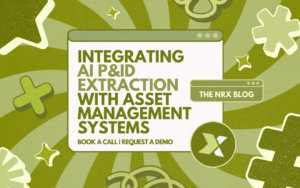88% of industrial firms believe that AI-based technologies such as digital twins are key drivers of digital transformation. As the digital landscape evolves, real-time decision-making is no longer optional, it is essential. Digital twins sit at the core of this transformation by turning continuous data streams into actionable intelligence.

Understanding the Foundation
A digital twin is not merely a digital replica. It is a living model that integrates data from sensors, systems, and applications to simulate real-world conditions. By continuously syncing with its physical counterpart, it enables real-time insight into operational performance. According to Deloitte, a digital twin can anticipate problems, streamline operations, and drive innovation through rapid simulations and continuous feedback loops. These capabilities are essential in today’s volatile markets.
The Real-Time Advantage
In industrial operations, downtime is costly. Digital twins provide continuous visibility into machine health, enabling real-time intervention. For instance, predictive maintenance becomes proactive when supported by digital twins. A malfunction can be anticipated and addressed before it disrupts the production line. Moreover, 60% of firms plan to boost their APM (Asset Performance Management) budgets, and 51% intend to raise CMMS investments. This is a reflection of growing confidence in these technologies to improve decision-making.
In the energy sector, digital twins are used to monitor turbines, pipelines, and grids. Operators receive instant feedback on asset performance, allowing for immediate response to pressure changes or wear indicators. This not only prevents failures but also extends asset lifespans. On the other hand, companies in logistics such as DHL use digital twins to model warehouse operations and optimize delivery routes in real time. During disruptions such as weather events or supply chain delays, these twins adjust delivery plans dynamically.

Plant Operations: A Core Focus
Plant operations stand to gain significantly from digital twin integration. While 62% of companies report that their plant digital transformation is ongoing, only 7% have fully completed the process. This signals that there’s a considerable journey ahead, and digital twins are critical to closing that gap. By providing real-time visualization and control, digital twins empower plant managers to detect inefficiencies and avoid costly disruptions. This agility enhances safety, compliance, and output quality.
Data to Decision: The Digital Infrastructure Backbone
The real-time power of digital twins is amplified when supported by strong digital infrastructure. Cloud platforms, edge computing, and 5G networks ensure seamless data flow between the physical and digital environments. When integrated with advanced analytics and AI, digital twins become even more powerful. They can learn from historical patterns and adapt to new variables without human intervention. This fusion of AI and digitalization creates a responsive ecosystem capable of handling complexity at scale.
Final Thoughts
Digital twins are a cornerstone of digital transformation. Their ability to deliver real-time insights positions them as essential tools for businesses aiming to thrive in a data-driven world. Whether optimizing plant operations, or preventing equipment failure, digital twins provide clarity in an increasingly complex environment.
Integrating AI P&ID Extraction with Asset Management Systems
ISO 14224 vs Other Maintenance Standards: What Sets It Apart?
Building Trust in Your Asset Data: Strategies for Governance
Share this article




